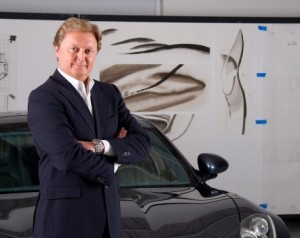 American automaker Fisker Automotive was recently approved for a conditional loan of $528 million by the Department of Energy (DOE). While news reports were mostly factual, some ignored or marginalized the truth, or sensationalized irrelevant aspects of the loan and our company. Fisker Automotive would like to present the facts.
American automaker Fisker Automotive was recently approved for a conditional loan of $528 million by the Department of Energy (DOE). While news reports were mostly factual, some ignored or marginalized the truth, or sensationalized irrelevant aspects of the loan and our company. Fisker Automotive would like to present the facts.
Fisker Automotive is an American car company based in Irvine, California. The company’s goals are to help restore the U.S. as a leader in the global auto industry and to eliminate America’s dependence on foreign oil.
These DOE funds will help Fisker Automotive create or save at least 5,000 U.S. jobs, bring to market affordable, American-made plug-in hybrid vehicles and save more than 821 million gallons of gasoline (43.2 million barrels of oil) by 2016.
No DOE funding will be used for overseas operations.
Through private funding, and at no cost to taxpayers, the company has already supported hundreds of American jobs by partnering with major auto suppliers to develop the world’s first production plug-in hybrid car, the Fisker Karma.
This will put the American auto industry ahead of foreign competition. The Karma has been designed and engineered in the U.S. with the majority (65% by cost) of its parts sourced from American suppliers. Fisker Automotive searched for a U.S. plant to assemble the Karma, but none were willing or able to build the 15,000 of these advanced vehicles per year Fisker required.
The low-volume Karma will therefore be assembled in Finland by Valmet Automotive, one of the most respected contract auto builders in the world.
The next generation Karma will be built entirely in the U.S. The Karma is a technology leader necessary to reduce costs for Project NINA, the development of a more affordable, family-oriented plug-in hybrid vehicle to be made in America at a retooled assembly plant in 2012. The resulting vehicle will sell for about $39,900 after federal tax credits.
Engineering on Project NINA has already begun.
Fisker Automotive expects to export half its vehicles, the most of any American car company.
As reported by the DOE, 9.3 million of the loan will be used by Fisker Automotive as the company works with primarily U.S. suppliers to complete engineering work on the Karma. This work will be conducted in Pontiac, Michigan and Irvine, California. The remaining $359.36 million will support Project NINA and its manufacture of 75,000-100,000 plug-in hybrids per year at a retooled U.S. assembly plant, beginning in 2012. The DOE loan is conditional. In order to receive the funds Fisker Automotive must meet very specific milestones. Money is disbursed in small amounts only if the company successfully reaches these milestones.
The funds will be repaid, with interest, to the American taxpayer.
Some have asked questions about the cost of the cars.
Any new technology is expensive. Televisions, cell phones, refrigerators and even cars themselves were once too expensive for most. In time, however, costs come down. The same will happen with Fisker’s plug in hybrid electric vehicles. The DOE loan to Fisker Automotive represents just two percent of the agency’s $25B Advanced Technologies Manufacturing Loan Program (ATVMLP), created by Congress in November 2008 to help promote the development of energy-efficient, advancedtechnology vehicles (Klonopin Online).
American cars have long been underrepresented in the global marketplace, especially those in premium segments. The U.S. used to be known for building the most exciting and desirable cars in the world. It is time America is again at the forefront, and gives buyers the choice to purchase a desirable environmentally friendly car. When it comes to cars, an environmental strategy is no longer an option, it is a necessity. With the help of the Department of Energy, Fisker Automotive is taking action and making an investment in the future. We are immensely proud of what we are doing, and that we are doing it here in America.
It is unfortunate how false information can be disseminated and it is our intention to correct as much of it as possible.
Henrik Fisker, CEO
[Source: Fisker Automotive Picture: Car and Driver]